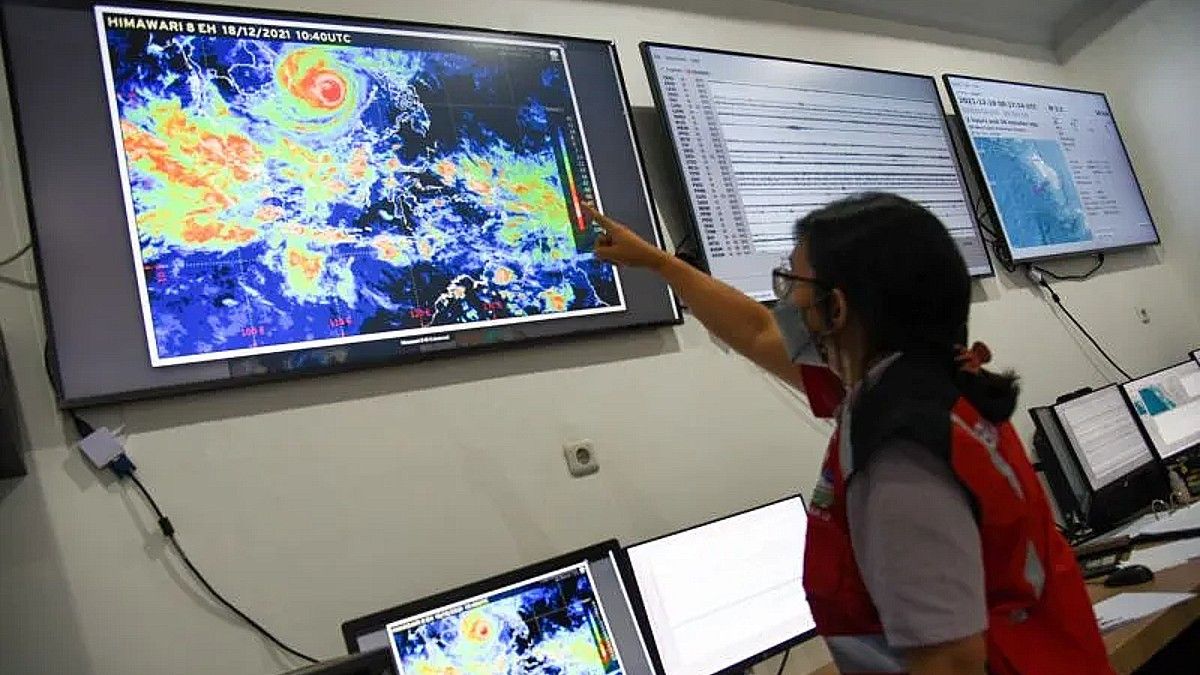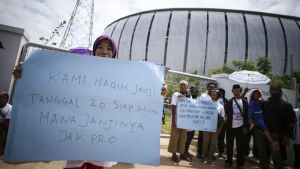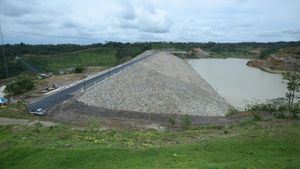YOGYAKARTA - The Yogyakarta Meteorology, Climatology and Geophysics Agency (BMKG) stated that the increase in seismic intensity due to the activity of the Opak Fault or fault that stretches in the middle of the Special Region of Yogyakarta (DIY) is still in the normal category.
Head of Class 1 Geophysics Station Sleman Setyo Aji Prayudi said his party continues to monitor earthquake activity in DIY, including those sourced from the Opak Fault for 24 hours through nine sensors.
"Why do I say it is in the normal category, because DIY-Central Java and south of DIY are indeed active zones for earthquakes, meaning that earthquakes can occur at any time," he said when contacted in Yogyakarta, Tuesday, August 15, as reported by Antara.
Aji admitted that based on the analysis of earthquake footage that was caught by BMKG's sensor, it showed that the intensity of the earthquake sourced from the Opak Fault had increased over the past five years.
"If we look at the seismicity data, the seismicity data in the past few years (2022, 2021, 2020 and so on), we see that the last five years the curve tends to increase," he said.
This earthquake on average has a small category of strength below a magnitude of 5.0, so that it can only read earthquake detectors, aka humans cannot feel them.
The trigger for the increase in seismicity, he said, was partly due to the release of the Opak Fault energy accumulation which is still active.
SEE ALSO:
Although the average magnitude is small, he called the incident an indication that these areas were earthquake areas.
Based on data from the monitoring of the Class I Geophysics Station of Sleman for the last five years, there were 136 earthquake events in Yogyakarta in 2018, then an increase to 144 incidents in 2019, 160 incidents in 2020, 282 incidents in 2021, and 902 incidents in 2022.
This earthquake stems from the activity of the Opak Fault and part of the subduction of the Indo-Australian and Eurasian Plates.
The intensity of earthquakes is increasing in the area of the Sepak Fault, said Aji, is even better, because it reduces the potential for large-power earthquakes to emerge.
"Theoretically, with the number of earthquakes that occurred, there was an energy release that was released rather than the accumulated energy, precisely when an earthquake occurred, the earthquake was big. So, with small earthquakes basically helping reduce large earthquakes," he said.
Although the timing of the earthquake was unpredictable, Aji admitted that the Opak Fault had the potential to trigger earthquakes with a magnitude of up to 6.5 or destructive earthquakes as had happened in 2006.
He asked for various information related to earthquake activity in the Sesar Opak area not to make people panic, on the contrary, it is necessary to respond with increased vigilance, mitigation capabilities, and building buildings with earthquake-resistant construction.
"The point is that the people in DIY or the people around the Opak Fault are more vigilant, in terms of understanding the concept of earthquake mitigation, understanding the concept of self-evacuation, so it is hoped that even if there is an impact it will not be too significant," he said.
Class I Geophysics Station Staff of Sleman Ayu K. Ekarsti added that apart from monitoring through sensors, BMKG also investigated how the activity of the Opak Fault through research with a number of universities using tomographic studies, seismicity studies, GPS observations, and a number of other methods.
Based on research that continues to be carried out by BMKG, he said, until now it has not been stated that there are new faults around the Opak Fault which stretches over parts of Bantul Regency, Sleman Regency, Gunungkidul, and parts of the city of Yogyakarta. "BMKG has not been able to provide a statement on the existence of new faults," he said.
Previously, the Head of BMKG Dwikorita Karnawati said that symptoms of increased seismic activity were starting to appear due to the Opak Fault.
According to him, large disaster mitigation from the Opak Fault in the Special Region of Yogyakarta (DIY) must continue to be carried out, because the target-magnitude fault M 6.6 and the source of the plate or megathrust subduction earthquake with a targeted magnitude of M 8.7 in southern Java are still active.
"So, mitigation and training efforts must not stop to the community, especially those living in coastal areas, because the threat of a tsunami also haunts other than earthquakes," said Dwikorita.
The English, Chinese, Japanese, Arabic, and French versions are automatically generated by the AI. So there may still be inaccuracies in translating, please always see Indonesian as our main language. (system supported by DigitalSiber.id)
















